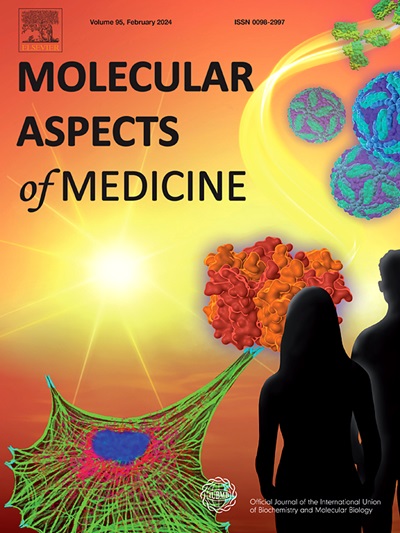Muscle aging and sarcopenia: The pathology, etiology, and most promising therapeutic targets
IF 10.3
2区 医学
Q1 BIOCHEMISTRY & MOLECULAR BIOLOGY
引用次数: 0
Abstract
Sarcopenia is a progressive muscle wasting disorder that severely impacts the quality of life of elderly individuals. Although the natural aging process primarily causes sarcopenia, it can develop in response to other conditions. Because muscle function is influenced by numerous changes that occur with age, the etiology of sarcopenia remains unclear. However, recent characterizations of the aging muscle transcriptional landscape, signaling pathway disruptions, fiber and extracellular matrix compositions, systemic metabolomic and inflammatory responses, mitochondrial function, and neurological inputs offer insights and hope for future treatments. This review will discuss age-related changes in healthy muscle and our current understanding of how this can deteriorate into sarcopenia. As our elderly population continues to grow, we must understand sarcopenia and find treatments that allow individuals to maintain independence and dignity throughout an extended lifespan.
肌肉老化和肌肉疏松症:病理、病因和最有希望的治疗目标。
肌肉疏松症是一种进行性肌肉萎缩症,严重影响老年人的生活质量。虽然肌肉疏松症主要是由自然衰老过程引起的,但它也可能因其他情况而发生。由于肌肉功能受到随年龄增长而发生的许多变化的影响,因此肌肉疏松症的病因仍不清楚。不过,最近对衰老肌肉转录结构、信号通路干扰、纤维和细胞外基质组成、全身代谢组学和炎症反应、线粒体功能和神经输入等方面的研究,为我们提供了深入的见解,也为未来的治疗带来了希望。本综述将讨论健康肌肉中与年龄有关的变化,以及我们目前对这种变化如何恶化成肌肉疏松症的理解。随着老年人口的不断增长,我们必须了解肌肉疏松症,并找到能让患者在延长的寿命中保持独立和尊严的治疗方法。
本文章由计算机程序翻译,如有差异,请以英文原文为准。
求助全文
约1分钟内获得全文
求助全文
来源期刊

Molecular Aspects of Medicine
医学-生化与分子生物学
CiteScore
18.20
自引率
0.00%
发文量
85
审稿时长
55 days
期刊介绍:
Molecular Aspects of Medicine is a review journal that serves as an official publication of the International Union of Biochemistry and Molecular Biology. It caters to physicians and biomedical scientists and aims to bridge the gap between these two fields. The journal encourages practicing clinical scientists to contribute by providing extended reviews on the molecular aspects of a specific medical field. These articles are written in a way that appeals to both doctors who may struggle with basic science and basic scientists who may have limited awareness of clinical practice issues. The journal covers a wide range of medical topics to showcase the molecular insights gained from basic science and highlight the challenging problems that medicine presents to the scientific community.
 求助内容:
求助内容: 应助结果提醒方式:
应助结果提醒方式:


